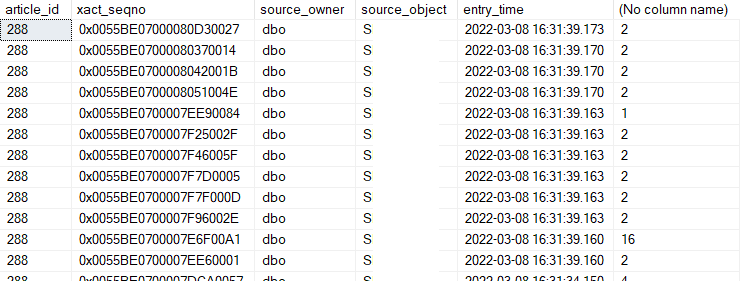Hi @SQLServerBro,
> Does it sound correct?
You can using this query to find numbers of transactions in this article and numbers of commands for every transaction in this replication article. But according to your screenshot, it seems that there is no batch operation in this replication article.
If you have batch updates that occasionally affect a large number of rows at the Subscriber, you should consider updating the published table using a stored procedure and publish the execution of the stored procedure. When the procedure is executed at the Publisher, replication executes the corresponding procedure at the Subscriber. This can provide significantly better performance for cases where large batch operations are performed, because only the procedure execution is replicated, bypassing the need to replicate the individual changes for each row. Refer to MS document Enhance Transactional Replication Performance and Publishing Stored Procedure Execution in Transactional Replication to get more.
In addition, suggest you reading below blog, it shares us the information about replication performance issues about batch operation in replication. And share us detail examples.
SQL Server Transactional Replication Issues
If the answer is helpful, please click "Accept Answer" and kindly upvote it. If you have extra questions about this answer, please click "Comment".

